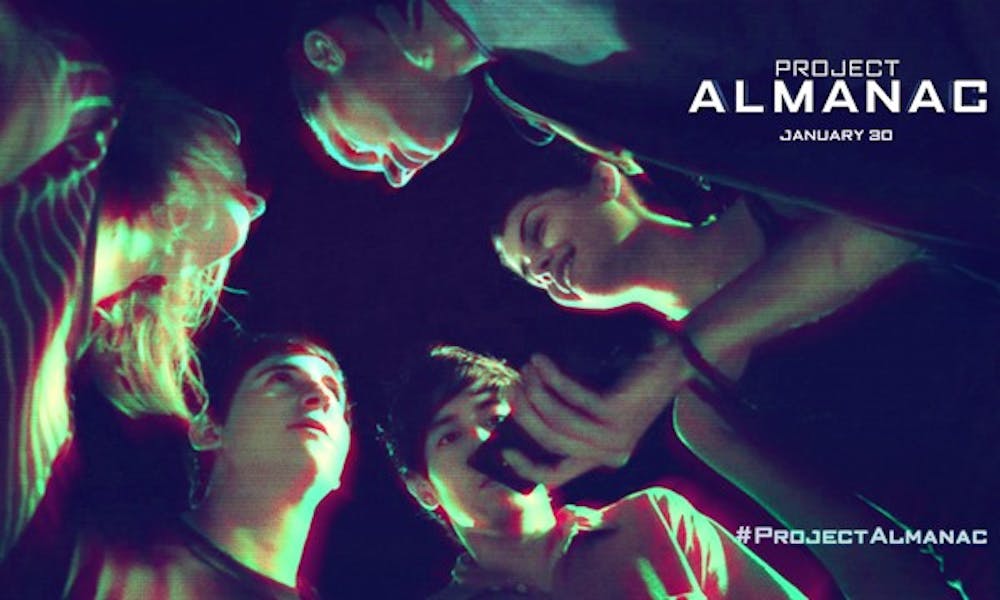Michael Bay's "Project Almanac," which came out Jan. 30, focused more on high school clichés than on the legitimacy of time-travel theory.
In a nutshell, “Project Almanac” is the nerdier, PG-13 version of “Project X.” Instead of hosting a wild party while the parents are out of town, the gang of high school seniors find blueprints to a time machine prototype and use their smarts to finish the job left by main character David’s dad before he died.
“Project Almanac” has everything you could possibly want from a B-level, high school dramedy: A geeky but good-looking protagonist turned hero, the popular girl love interest, the Asian brainiac sidekick who falls for David’s sister and the goofy Jewish best friend.
It’s like the producers asked themselves what today’s tweens think high school is going to be like, and then tried to cram as many clichés into the movie as possible.
Tropes like high school parties turned block parties with music blasting through the neighborhood, uninvolved parents too busy to care if their kids are, you know, time-traveling and (spoiler alert) the popular girl who’s secretly been in love with the nerd for years.
This rendition of the age-old idea of time travel taps into the classic idea of a ripple effect: Any actions made in the past can ripple into the future with a bigger effect.
Of course, the group soon learns that “there are no real second chances” after their trips back in time to party at Lollapalooza, win the lottery and win the popular girl’s heart start to backfire and calamity ensues.
The film is shot from the perspective of a hand-held camera documenting the group’s experiments with time-travel. Unfortunately, this only serves to highlight the terrible acting. It feels like you’re watching each actor perform a monologue for an audition.
The idea of time travel is intriguing, if for no other reason than to see how each film that tackles the subject interprets the rules. What happens if you see yourself in the past or future? How do separate timelines interact? Or is there only one self-fulfilling timeline?
“Project Almanac” doesn’t take the rules as seriously as Ray Bradbury’s short story “A Sound of Thunder” or even Harry Potter and leaves a frustrating number of plot holes. It’s never made clear exactly what happens when the continuum is disrupted and the person disappears, and the ripple effect is not utilized consistently.
In my mind, any time travel would change the future. I’m with Ray Bradbury.
But hey, at least David gets the girl. That’s all that really matters anyway.
Tell the reporter your favorite time travel movie at enichol3@asu.edu or follow @LizNichols4 on Twitter.
Like The State Press on Facebook and follow @statepress on Twitter.





